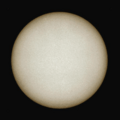Pre-Socratic philosophy facts for kids
The Pre-Socratic Greek philosophers were thinkers who lived and worked in Ancient Greece before the famous philosopher Socrates. They were the very first Western philosophers, trying to understand the world around them using logic and reason instead of myths and stories. The name "Pre-Socratic" became popular thanks to a book by Hermann Diels called The Fragments of the Pre-Socratics.
Most of what we know about these early philosophers comes from what later writers said about them. Even though they wrote many important books, none of their original writings have survived completely. We only have small pieces and quotes.
A big idea that guided many Pre-Socratic thinkers was naturalism. This means they believed that questions about life and the world could be answered by looking at nature and using logic, rather than relying on old myths or gods. They thought that the "natural world is all that truly exists."
These Greek thinkers slowly started to use rational thought (thinking based on reason) and scientific reasoning. This was a big step away from a time when people mostly explained things with myths and stories.
Contents
Important Schools and Philosophers
Many different schools of thought and individual philosophers existed before Socrates. Here are some of the most well-known:
Milesian School
This group of philosophers came from the city of Miletus. They were among the first to try to find the basic material that everything is made of.
- Thales (624–546 BC)
- Anaximander (610–546 BC)
- Anaximenes of Miletus (585–525 BC)
Pythagorean Schools
This school followed the teachings of Pythagoras. They believed that numbers were the key to understanding the universe.
- Pythagoras (582–496 BC)
- Philolaus (470–380 BC)
- Alcmaeon of Croton
- Archytas (428–347 BC)
Heraclitus
- Heraclitus (535–475 BC) was a philosopher known for his idea that everything is constantly changing. He famously said, "You cannot step into the same river twice."
Eleatic School
This group focused on ideas about reality and existence. They believed that change was an illusion and that reality was one, unchanging thing.
- Xenophanes (570–470 BC)
- Parmenides (510–440 BC)
- Zeno of Elea (490–430 BC)
- Melissus of Samos (C.470 BC–unknown)
Pluralist School
These philosophers tried to explain the world using multiple basic elements, unlike the Milesians who looked for just one.
- Empedocles (490–430 BC)
- Anaxagoras (500–428 BC)
Atomist School
This school developed the idea that everything is made of tiny, invisible particles called atoms.
- Leucippus (5th century BC, dates unknown)
- Democritus (460–370 BC)
Sophism
Sophists were teachers who traveled around Ancient Greece, teaching rhetoric (the art of speaking and persuading) and other subjects. They often focused on human affairs and how people could succeed in society.
- Protagoras (481–420 BC)
- Gorgias (483–375 BC)
- Thrasymachus
- Callicles
- Critias
- Prodicus (465–390 BC)
- Hippias (485–415 BC)
- Antiphon (person) (480–411 BC)
- Lycophron
- Anonymous Iamblichi
Other Notable Thinkers
- Diogenes of Apollonia (c.460 BC–unknown)
Other Important Figures
Some other important thinkers and groups from this period include:
Seven Sages of Greece
This was a group of wise men known for their practical wisdom and sayings.
- Solon (c. 594 BC)
- Chilon of Sparta (c. 560 BC)
- Thales (c. 585 BC)
- Bias of Priene (c. 570 BC)
- Cleobulus of Rhodes (c. 600 BC)
- Pittacus of Mitylene (c. 600 BC)
- Periander (625–585 BC)
Individual Thinkers
- Aristeas of Proconnesus (7th century BC ?)
- Pherecydes of Syros (c. 540 BC)
- Anacharsis (c. 590 BC)
- Theano (mathematician) (5th century BC, dates unknown)
Images for kids
-
St. Elmo's fire (luminous plasma created by a corona discharge from a rod-like object) in a ship. Xenophanes' contemporaries attributed this phenomenon to the deity Dioscuri. Xenophanes argued that the observed illumination is due to small clouds influenced by special circumstances relating to stars—an example of naturalism and reductionism.
-
According to Parmenides, Being, what exists, is like the mass of a perfect sphere: undifferentiated, indivisible, and unchangeable.
-
Democritus by Hendrick ter Brugghen, 1628. Democritus was known as the "laughing philosopher"
See also
 In Spanish: Filosofía presocrática para niños
In Spanish: Filosofía presocrática para niños






